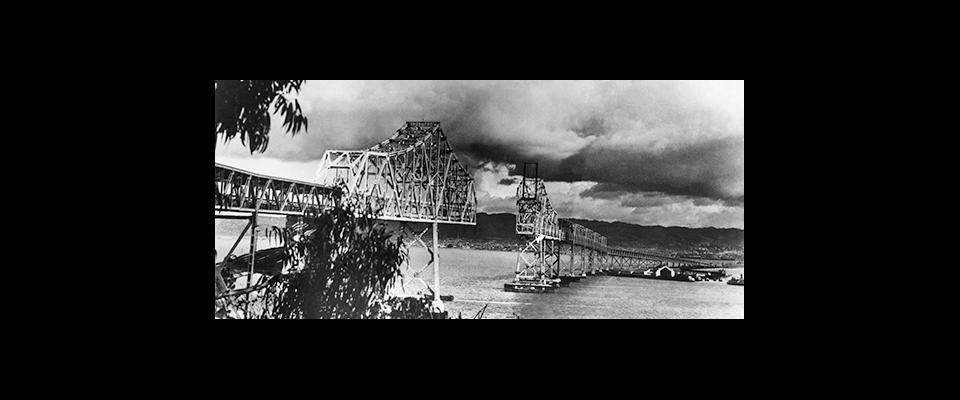The problems keep piling up for CalTrans – and by extension, for anyone who will drive across the new Bay Bridge. The project has been dogged by controversy from the start, and concerns have reached the point that public safety seems very much in question.
Earlier this year – and as reported in the current issue of California — the alarm sounded when it was discovered that the anchor bolts connecting seismic safety devices to the bridge’s deck and support beams were snapping when tightened. That depressing revelation had been preceded by a litany of other woes, from faulty welds, to questionable safety tests conducted by CalTrans engineers, to doubts about the basic design of the “signature” self-anchored suspension span between Yerba Buena Island and Oakland.
Now comes news, as reported by the San Francisco Chronicle’s Jaxon Van Derbeken M.J. ‘87, that Tung-Yen Lin, the legendary engineer and Berkeley alum (he earned his Masters at Cal in 1933) whose firm had been hired by CalTrans to produce designs for the new bridge in 1997, had expressed grave misgivings about the chosen option – and had been roundly snubbed for his candor.
In the late 1990s, two designs were under consideration, both submitted by Lin’s namesake firm (he had sold the company years earlier). The first was a conventional suspension span that incorporated cables from a central tower. The second “self-anchored” span involved wrapping the deck with huge cables that were then hung over the tower, and secured by a mass of smaller cables.
The aesthetics of the second design beguiled politicians and CalTrans officials, and it was chosen over the objections of many civil engineers – including, it turned out, Lin himself, who died in 2003. He loathed the self-anchored span, and lobbied against it. And he didn’t mince words with the design committee that overruled his objections in 1998, calling the choice “a monument to stupidity.”
Many engineers think Lin was right on the money.
“T.Y. Lin was a smart man,” observes Berkeley emeritus professor of civil and environmental engineering Bob Bea. “Too bad CalTrans didn’t listen to him.”
Bea is an internationally-recognized expert in large project risk assessment, and he shared some thoughts on the new Bay Bridge’s problems via email.
“The situation is to a point that CalTrans needs to stop the useless rhetoric, think deeply about what we know and don’t know, and develop a thorough plan to go forward,” Bea writes. “(In other words), stop, think, (and) don’t do something stupid again.”
Once a comprehensive understanding of the new span’s performance characteristics has been achieved, Bea continues, then “fixes can be designed, their performances assessed using previously developed analytical models, and the best (solutions) identified so they can be properly implemented.”
Finally, writes Bea, a long-term program for IMR (inspection, maintenance and repair) must be developed and implemented.
“Once these things have been done, then we should be good to go,” concludes Bea. “Until (then), we are not good to go.”
— Glen Martin

















